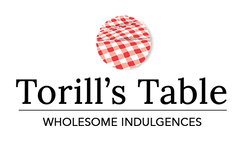
March 25 is International Waffle Day. We’re not suggesting that it be declared an international holiday but we do have it marked on our calendars every year because it also coincides with Waffle Day in Norway, Sweden and Denmark. In fact, there are several days around the world devoted exclusively to celebrating waffles: August 24 is National Waffle Day in Canada and the United States, and July 19 is Belgian Waffle Day - in India!
The original Scandanavian Waffle Day comes from Sweden and has an amusing origin story. Waffle Day takes place the same day as The Feast of the Annunciation, commonly called Our Lady’s Day or Vårfrudagen. Since Vårfrudagen sounds an awful lot like Våffeldagen (waffle day) in some dialects, our friends in Sweden began calling the day Waffle Day as a joke and began eating waffles to celebrate it.
Now you might think we here at Torill’s Table would like to incorporate all these waffle days into one international celebration but we kind of like that waffles have their own day - several times a year!
To celebrate all these waffles, it might be fun to take a look at the differences between Norwegian and Belgian waffles. Since pancakes and crepes are in the same family, we’ll take a look at those two as well. Just don’t get us started on all the national and international pancake and crepe days. Hint: there are a few.
World War Waffles
Belgian waffles are probably the most renowned of all the waffles. The batter is lighter and fluffier because of the added baking soda, and the waffles are made in waffle irons with deeper grids to create those nice bottomless pockets for thick pads of butter to melt in or float in delicious pools of syrup.
Norwegian waffles or vafler are traditionally more of a dessert or snacking waffle. Thin, soft and sweet, these heart-shaped treasures are often served with Norwegian brown cheese, a tan coloured cheese made out of goat’s whey that gives it a distinct caramel flavour. They can also be served with a homemade jam.
Heart-shaped waffles are a cultural treasure in Norway and you’re likely to find them everywhere: on ski slopes, sporting events or just in streetside cafes. These waffles are the King of Kos.
The Great Pancake Debate
Yes, this one is less of a war.
Traditional American pancakes are a perennial favourite. Thick and fluffy because they contain rising agents like baking powder or baking soda, pancakes can be flavoured by adding fruit or flavours to the batter before cooking or added on top afterwards. Favourites include berries or caramelized apple, cheeses, jams or chocolate sauce.
French crepes are thin and delicate with a smoother texture from sitting for an hour or more before cooking. The batter is spread thin across the entire base of the pan.
Crepes are flavoured differently than pancakes and you add toppings after they’re cooked. A traditional crepe is folded and stuffed with everything from Nutella to cheese, fruit to chicken, and offered in either sweet or savoury flavours for a meal or a dessert.
The crepe in Paris is similar to the heart-shaped waffle in Norway: a staple of the Parisian diet and culture. Go to any neighbourhood creperie or kiosk in Paris and you’ll likely find a line-up of native Parisians at lunch time and tourists hungry for a snack any time.
Want to Host Your Own Pancake or Waffle War?
Torill’s Table Pancake and Waffle Mixes are the ideal starting point for your own Waffles Around the World Tour.
Whatever your preference, and you should really do yourself a favour and try them all, Torill’s Table Pancake and Waffle mixes are here to help you make the best version of your favourites.


Leave a comment